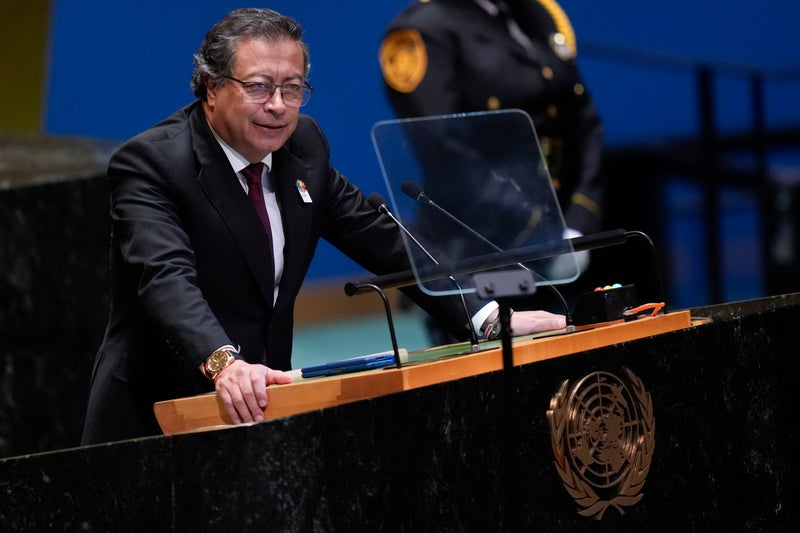Lauren Bellefontaine came off the ice after a game in Sweden’s top women’s hockey league and detailed the toll her body had just taken. “I got a stick to the collarbone tonight and also a hit to the head. Definitely some bumps and bruises,” she said with a smile. “But I’m feeling fine.”. Growing up in Canada, Bellefontaine kept hearing people ask why there was no hitting in women’s hockey. It has taken a move to northern Sweden for her to discover the more physical side of the sport.
In 2022, Sweden became the first country to introduce body checking to its premier women’s league, bringing its rule book closer to men’s hockey even though hockey’s world governing body does not formally allow the practice because of safety concerns. It has opened up a new world for women's players, who say they feel more empowered playing the game the way it was intended. Swedish hockey officials say the results have been overwhelmingly positive: The women’s game has become faster and more entertaining while concussions, which have been a scourge for the sport, have decreased.
Other countries are now looking to follow suit, with the PWHL — the professional women’s league in North America with some of the world's top players — putting checking in the rules for its inaugural season last year. “It has given us the opportunity to prove we’re physical, we’re strong and we can play just like the men’s players,” Bellefontaine said. “It allows us to show we can — and we will.”.
Bellefontaine joined MoDo for the start of the 2023-24 season. It’s a title-contending team from Örnsköldsvik, a sleepy coastal town some 530 kilometers (330 miles) north of Stockholm — and not far from the Arctic Circle — whose population of 30,000 lives and breathes hockey and whose most famous alumni include NHL greats Peter Forsberg, Henrik and Daniel Sedin, and Markus Naslund. Initially it was something of a culture shock to her.
“I had no prior experience of hitting at all,” the 25-year-old Bellefontaine said, “and we went right into the season so it took me a while to get into it … it was tough but now it’s just fun.”. Safer, too. Benefits of body checking. Statistics supplied by the Swedish women’s league show the number of concussions sustained by players has dropped since 2018, when its “Project Zero Vision” was launched. There were 35 reported concussions in the 2018-19 regular season, 10 in 2022-23 and 15 in 2023-24. By Jan. 8 this year, which was approaching the end of the regular season, there had been six.
Preventing concussions was the main driver behind the introduction of checking, as counterintuitive as that may seem. It has forced players to skate with their heads up, increasing their ice awareness. There have been other benefits of bringing back checking, which was part of the game in women’s hockey in Europe and North America until the mid-1980s but isn’t in the International Ice Hockey Federation’s current rule book. Coaches, league officials and fans say the speed of the Swedish game has gotten quicker, as players make smarter and faster decisions.
For many, it restores the balance between skill and physicality that is important in making the sport an entertaining watch. “It creates some tension in the game that you otherwise don’t get,” said Luc de Keijzer, a 27-year-old student who is a regular at MoDo games. One big hope is that increased physical play makes Sweden more competitive at the international level against traditional hockey powers like the United States, Canada and Finland. Sweden's women's team regularly goes deep in world championships and Olympic Games but hasn't won the gold medal at either tournament.
Closing the equality gap. For some female players, the biggest effect has been to make them feel more empowered. That’s because they are essentially following the same rules as the men, except for one key difference: hits on open ice — when players are skating freely away from the boards — are forbidden in women’s hockey. “We’re trying to close the gap between men’s and women’s hockey, so this is one way we are doing it — to have similar rules as they do,” said Alexie Guay, another Canadian playing for MoDo. “It’s not as intense and there are different rules still — I don’t know if there will be fighting in women’s hockey in the future — but we’re definitely closing the gap and I think it’s a cool thing.”.
According to research by Lund University in Sweden, 88% of the 159 players from the league who responded to a questionnaire said they were in favor of checking. Jared Cipparone, the coach of MoDo’s women’s team, said he hasn’t encountered any resistance from his players about checking. “Everyone was excited about it,” said Cipparone, who is also from Canada. “The first year was trial and fire for many, but last year and this year you see the significance it’s made in the game and I’ve only heard good things about it.”.































